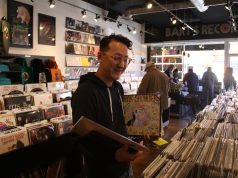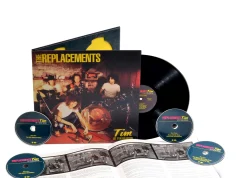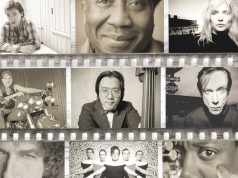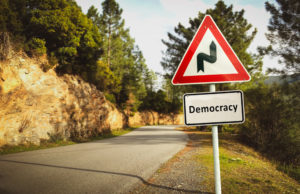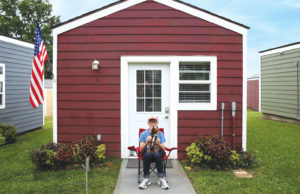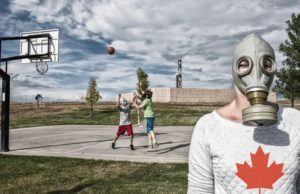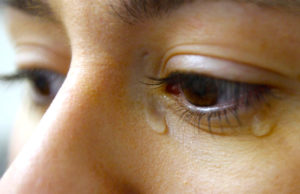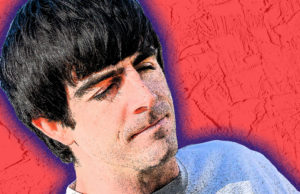
I have seen the map of the world…”
Those are the opening words of a lively Italian song of the late 15th century, when that statement meant something. It is even possible that Columbus’ sailors sang those words on the way to a world that was not yet on the European maps.
More than 500 years later, the same song will open a concert by Boulder’s Ars Nova Singers, “New World Renaissance,” presented at 7:30 p.m. Friday in Boulder and Saturday in Englewood. Ars Nova’s artistic director Thomas Edward Morgan will conduct the performance, which will feature guest artists Ann Marie Morgan, viola da gamba, and William Simms, theorbo (a longnecked bass lute) and Baroque guitar.
“We open the program with that, because we’re sailing off to the New World,” says Thomas Morgan, artistic director and conductor of the Ars Nova Singers. He is of course speaking metaphorically: The concert will explore music that was written or was likely performed in the New World during the 16th and 17th centuries. The featured work, Missa Ego flos campi by Juan Gutiérrez de Padilla, was written for performance at the cathedral in Puebla, Mexico, in the mid-17th century.
The program includes “Hanacpachap cussicuinin,” a hymn written in the Quechua language of the Incan Empire by the Franciscan priest Juan Pérez Bocanegra. Published in Lima, Peru, in 1631, it was the first piece of music printed in the Western Hemisphere. There will also be several shorter choral pieces and instrumental music played by the two guest artists.
“One of the highlights of the program is being able to perform with Ann Marie and William Simms,” Morgan says of the guests. “They’re world-class players, and for an ensemble to get a chance to perform with that level of player is really quite wonderful.”
When the Spanish came into the Western Hemisphere, they built churches and cathedrals wherever they went. Many of those buildings, from the Andes to California, have become well-known historical monuments. Less well known is the music that was performed in those spaces, some of it brought from Spain but much of it created locally.
“There’s quite a lot of repertoire,” Morgan explains, “but it’s challenging to get good performing editions. Some of it appears in academic collections, but not in performance editions.
“One of the things that is appealing is that a lot of the work is based on [music] of the Spanish Golden Age. Some of the composers were trained in Spain and then came to the New World. It’s interesting to see how the indigenous music of Central America infiltrates into the traditional polyphony.”
A case in point is the featured work. The composer, Gutiérrez de Padilla, was born in Spain around 1590 and travelled to Mexico in 1620. By the 1630s he was head of a large musical establishment in Puebla, with singers as well as instrumentalists performing at the services. He was a very busy composer — more than 700 works survive — who was also making and selling wind instruments.
“In the Missa Ego flos campi there’s a lot of rhythmic things related to the popular dance music and street music of Central America,” Morgan says. “Some of those rhythmic gestures make [the music] very lively. You can tell that the composer was intentional about it, that he was trying to connect with his audience.
“It gives it a rhythmic vitality that a lot of the standard church music of that era doesn’t really express.”
Morgan says that the Mass is interesting in other ways. It is written for eight parts, divided into two separate choirs that sing in dialogue with one another. And the Credo movement, the largest single movement of the Mass, has a unique and dramatic musical gesture throughout.
“He has 27 statements of just the word credo all the way through the movement. I don’t know any other mass in any repertoire that does this,” he says. “We’re going to make little concertos by dividing up the voices into little ensembles, and then have the whole ensemble respond with the credos.”
Several pieces on the program were written by composers who never saw the New World. Instead, they were taken from the most important source for Spanish music of the period, the Cancionero de Palacio (The Palace Songbook).
“It was assembled from the best composers in Spain during the time of Ferdinand and Isabella,” Morgan says. “It was a very popular collection, and probably these pieces were performed in the New World as well.”
Written or performed in Mexico and Peru, the music on this program is as much a new world to modern audiences as the Americas were to the Spanish explorers. And it is a world worth discovering.
ON THE BILL: “New World Renaissance.” Ars Nova Singers, Tom Morgan, condjuctor. Ann Marie Morgan, viola da gamba, William Simms, theorbo and Baroque guitar. 7:30 p.m. Friday, April 10, St. John´s Episcopal Church, 1419 Pine St., Boulder. 7:30 p.m. Saturday, April 11, Bethany Lutheran Church, 4500 Hampden Blvd., Englewood. Tickets on arsnovasingers.com.


